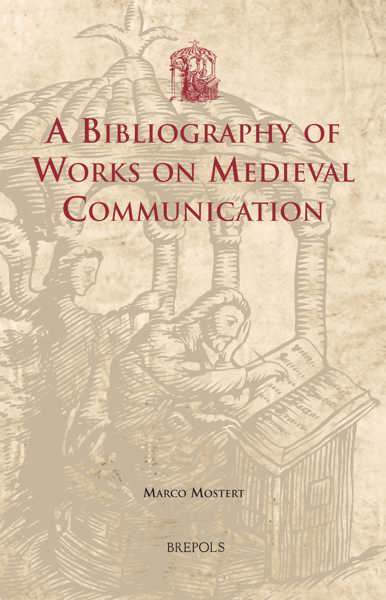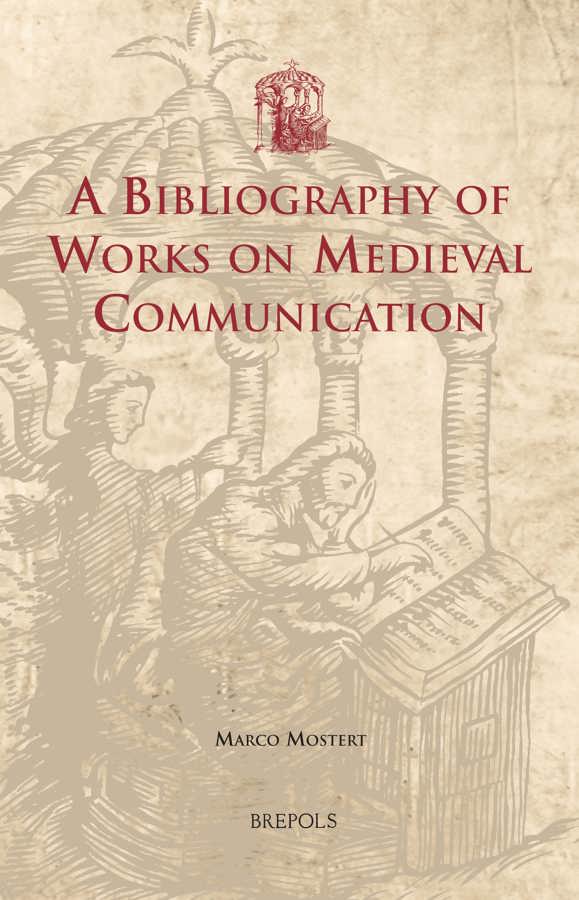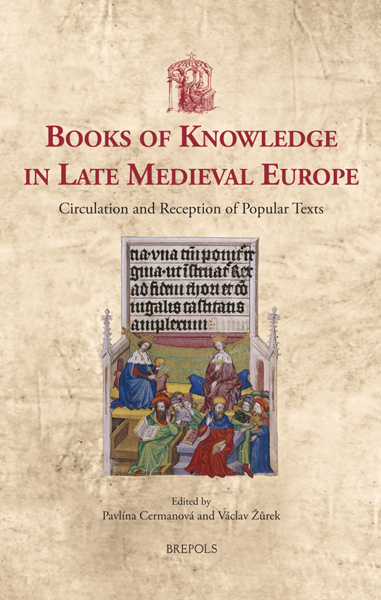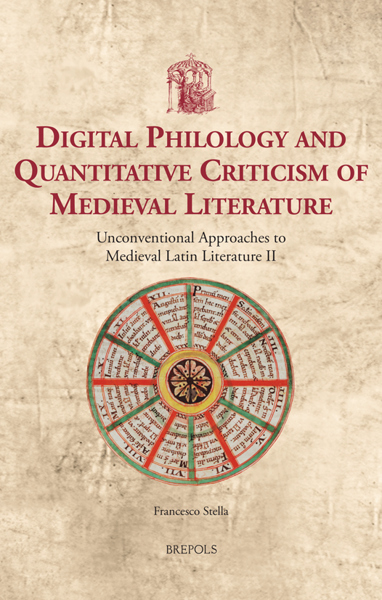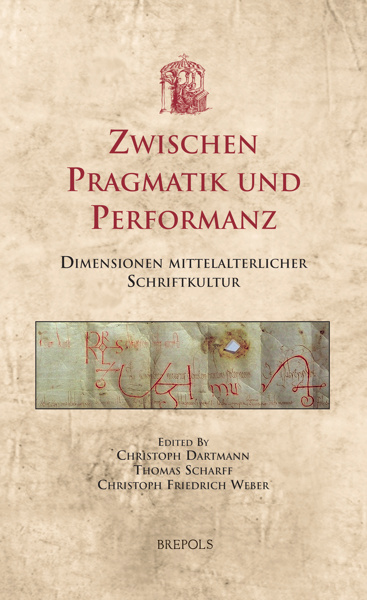
A Bibliography of Works on Medieval Communication
Marco Mostert
- Pages: xiv + 658 p.
- Size:156 x 234 mm
- Language(s):English
- Publication Year:2012
- € 140,00 EXCL. VAT RETAIL PRICE
- ISBN: 978-2-503-54477-9
- Hardback
- Available
- € 140,00 EXCL. VAT RETAIL PRICE
- ISBN: 978-2-503-56039-7
- E-book
- Available
This bibliography of works on medieval communication offers a survey of work in a field of study which, from the 1960s onwards, has seen an ever-increasing number of monographs, collections of miscellanies and articles in learned journals being published every year.
"Kommunikation im Mittelalter - wohl kein Forschungsgebiet präsentiert sich innerhalb der Mediävistik derart vielschichtig. Die 6843 Titel, die in der vorliegenden Spezialbibliographie Aufnahme fanden, künden von diesem extrem breiten Fach- und Themenspektrum." (Ralf Lützelschwab, in: Sehepunkte, 13 (2013), Nr. 7/8 (15.07.2013))
"(...) this is a hugely ambitious and remarkably generous resource that is sure to be useful to medievalists of almost every discipline." (Scott Bruce, in: The Medieval Review, 13.05.13)
This bibliography of works on medieval communication offers a survey of work in a field of study which, from the 1960s onwards, has seen an ever-increasing number of monographs, collections of miscellanies and articles in learned journals being published every year. It provides a guide to this astonishing output by offering a list of more than 6.700 publications under sixteen headings. Because of the overlap of these headings, a comprehensive Index of subjects, place names and personal names is provided, which will allow the user to quickly find publications relevant to his research. A short Introduction precedes the bibliography. Progress in the field of study over the past two decades is outlined, with attention to those recent developments which have proved the most productive. At the same time, something is said about the growing insights which have led the bibliography’s organisation to be changed substantially since its previous edition in 1999, which already numbered 1.580 items. Not only the more than fourfold increase in the number of items made a new edition necessary therefore, but also new ideas about the best ways of organising the knowledge that is to be gained from the contents of studies of medieval communication.
Preface
Introduction
How to Use This Bibliography
Chapter 1. Introductions
1.1 Theory of Literacy and (Written) Communication
1.2 Anthropological and Sociological Contributions to the Debate
1.3 Psychological Contributions to the Debate
1.4 Linguistic Contributions to the Debate
1.5 Literacy and (Written) Communication (in the Middle Ages)
1.5.1 The Münster School
1.5.2 The Freiburg School
Chapter 2. Surveys of the Introduction and Development of Written Culture
2.1 From Antiquity to the Present
2.2 Antiquity
2.2.1 Biblical Antiquity and Early Christianity
2.2.2 Classical Antiquity
2.2.3 Greek Antiquity
2.2.4 Roman Antiquity
2.2.5 Late Antiquity
2.3 Byzantium
2.4 The Middle Ages
2.4.1 Early Middle Ages
2.4.2 Later Middle Ages
2.5 Italy
2.5.1 Italy in the Early Middle Ages
2.5.2 Italy in the Later Middle Ages
2.6 Iberian Peninsula
2.7 France
2.8 Germany
2.8.1 Germany in the Early Middle Ages
2.8.2 Germany in the Later Middle Ages
2.9 Low Countries
2.10 England
2.10.1 England in the Early Middle Ages
2.10.2 England in the Later Middle Ages
2.11 Ireland and the ‘Celtic Fringe’
2.12 Scandinavia
12.13 The Eastern Baltic Shores
2.14 East Central and Eastern Europe
2.14.1 East Central Europe: Bohemia, Hungary and Poland
2.14.2 The Balkans (without Byzantium)
2.14.3 Eastern Europe: The Russias
2.15 Jews
2.16 The Islamic World
2.17 After the Middle Ages
Chapter 3. Forms of Non-Verbal Communication
3.1 Middle Ages – General
3.2 Symbolic Spaces, Public and Private
3.3 The Senses
3.3.1 Smells
3.3.2 Flavours
3.4 Colours
3.5 Visual Images
3.5.1 Visual Images in Antiquity
3.5.2 Visual Images in Byzantium
3.5.3 Visual Images in the Middle Ages
3.5.3.1 Visual Images in the Early Middle Ages
3.5.3.2 Visual Images in the Later Middle Ages
3.5.4 Visual Images after the Middle Ages
3.6 Visual Images and Texts
3.6.1 General
3.6.1.1 Visual Images and the Illiterate
3.6.2 Visual Images and Texts in Antiquity
3.6.3 Visual Images and Texts in Byzantium
3.6.4 Visual Images and Texts in Islam
3.6.5 Visual Images and Texts in the Middle Ages
3.6.5.1 Visual Images and Texts in the Early Middle Ages
3.6.5.2 Visual Images and Texts in the Later Middle Ages
3.6.6 Visual Images and Texts after the Middle Ages
3.7 Sound and Noise
3.7.1 Music
3.8 The Human Body
3.9 Gestures
3.9.1 Gestures from Antiquity to the Present
3.9.2 Gestures in Antiquity
3.9.3 Gestures in Byzantium
3.9.4 Gestures in the Middle Ages
3.9.4.1 Gestures in the Early Middle Ages
3.9.4.2 Gestures in the Later Middle Ages
3.9.5 Gestures after the Middle Ages
3.10 Sign Language
3.11 Dance
3.12 Clothes
3.13 Symbolic Objects
3.14 Laughter
Chapter 4. Ritual
4.1 Theory of Ritual
4.2 (Ritualised) Emotions
4.3 Ritual – General Surveys
4.4 Ritual in the Middle Ages
4.5 Ritual in Early Modern Europe
4.6 Forms of Ritual
4.6.1 Forms of Ritual: Feasts
4.6.2 Forms of Ritual: Meals and Banquets
4.6.3 Forms of Ritual: (Table) Manners
4.7 Representation, Political Ritual and Ceremony
4.7.1 Representation
4.7.2 The Notion of Political Ritual
4.7.3 Political Ritual – General Surveys
4.7.4 Political Ritual in Antiquity
4.7.5 Political Ritual in the Middle Ages
4.7.5.1 Political Ritual in Early Medieval Europe
4.7.5.2 Political Ritual in Later Medieval Europe
4.7.6 Rituals of Rule: Acclamations, Coronations and Investitures
4.7.7 Rituals of Rule: Festive Entries
4.7.8 Rituals of Rule: The Meeting of Rulers
4.7.9 Rituals of Rule: Assemblies, Councils and Counsel
4.7.10 Rituals of Rule: The Lit de Justice
4.7.11 Rituals of Rule: Oaths, Pacts and Peace-Making
4.7.12 Rituals of Rule: On The Battlefield
4.7.13 Rituals of Rule: Staged Emotions
4.7.14 Rituals of Rule: Weddings
4.7.15 Rituals of Rule: Funerals
4.7.16 Rituals of Rule: The Papacy
4.7.17 Rituals of Rule: The Aristocracy
4.7.18 Rituals of Rule: The Towns
4.8 Rituals in Literature
Chapter 5. Language
5.1 Thinking about Language
5.2 Language in Antiquity
5.3 The Problem of Latin
5.3.1 Latin: General
5.3.2 Christian and Late Latin
5.3.3 Latin as Mother Tongue: From Latin to Romance
5.3.4 Latin as Father Tongue: Medieval Latin
5.3.5 Neo-Latin
5.4 The Problem of the Vernaculars
5.5 The Problem of Translation
5.6 Languages in Europe
5.6.1 Languages in the Italian Peninsula
5.6.2 Languages in the Iberian Peninsula
5.6.3 Languages in France
5.6.4 Languages in Switzerland
5.6.5 Languages in the German-speaking World
5.6.6 Languages in the Low Countries
5.6.7 Languages in the British Isles: Generalities
5.6.7.1 Languages in the British Isles: England
5.6.7.2 Languages in the British Isles: Scotland
5.6.7.3 Languages in the British Isles: The ‘Celtic Fringe’
5.6.7.3.1Languages in the British Isles: Ireland
5.6.7.3.2Languages in the British Isles: Wales
5.6.8 Languages in Scandinavia
5.6.9 Languages on the Eastern Shores of the Baltic
5.6.10 Languages in East Central and Eastern Europe: Generalities
5.6.10.1 Languages in East Central Europe: Bohemia, Poland and Hungary
5.6.10.2 Languages in Eastern Europe: The Russias
5.6.11 Languages in South Eastern Europe (Including Byzantium)
5.6.12 Languages in the Middle East
5.7 Language as a Means of Distinction
5.8 Forms of Oral Communication
5.8.1 Forms of Oral Communication: Silence
5.8.2 Forms of Oral Communication: Battles of Words
5.8.3 Forms of Oral Communication: Proverbs
5.8.4 Forms of Oral Communication: Riddles
5.8.5 Forms of Oral Communication: Gossip
5.8.6 Forms of Oral Communication: Addressing the Ruler
5.8.7 Forms of Oral Communication: Law and Justice
5.8.8 Forms of Oral Communication: Administration
5.8.9 Forms of Oral Communication: Blasphemy, Curses and Other Verbal Injuries
5.8.10 Forms of Oral Communication: Parliamentary Rhetoric
5.8.11 Forms of Oral Communication: Battlefield Language
5.8.12 Forms of Oral Communication: Shouting
Chapter 6. Oral and Written Memory
6.1 Classical Antiquity
6.2 Middle Ages
6.3 “Lieux de Mémoire”
6.4 The Past in Primarily Oral Societies
6.5 Oral Tradition
6.5.1 Oral Tradition in Antiquity
6.5.2 Oral Tradition in the Middle Ages
6.5.2.1 Oral Tradition in the Early Middle Ages
6.5.2.2 Oral Tradition in the Later Middle Ages
6.5.3 Oral Tradition in Literary Texts
6.5.4 Oral Tradition in Historiography
Chapter 7. Teaching, Mainly of Reading and Writing
7.1 Teaching in Antiquity
7.2 Teaching in the Middle Ages
7.2.1 Teaching in the Early Middle Ages
7.2.2 Teaching in the Later Middle Ages
7.2.3 The Medieval University
7.3 Teaching in Islam
7.4 Jewish Education
Chapter 8. Production and Use of Written Texts
8.1 Script and Script Forms
8.2 Runes, Inscriptions, Graffiti and Wax Tablets
8.3 Book Production and Use
8.3.1 Book Production in Antiquity, Byzantium and the Islamic World
8.3.2 Book Production in the Middle Ages
8.3.2.1 Book Production in the Early Middle Ages
8.3.2.2 Book Production in the Later Middle Ages
8.4 Producing Charters and Archival Documents
8.5 Reading and the Reception of Texts
8.5.1 Reading in Antiquity
8.5.2 Reading in Byzantium
8.5.3 Reading in the Middle Ages
8.5.3.1 Reading in the Early Middle Ages
8.5.3.2 Reading in the Later Middle Ages
8.5.4 Reading in Early Modern Times
8.5.5 Reading, Lay-out, Manuscript Research and Editorial Techniques
8.6 The Printed Word
Chapter 9. The Preservation and Wilful Destruction of Written Texts
Chapter 10. Correspondence, Messengers and the Postal System
10.1 Messengers and Ambassadors
Chapter 11. Mandarin Literacy
Chapter 12. The Use of Writing by Different Social Groups
12.1 Clergy and Laymen
12.1.1 Secular Clergy
12.1.2 Regular Clergy
12.2 Aristocrats
12.3 Peasants
12.4 Town Dwellers
12.5 Women
12.5.1 Women Before the Middle Ages
12.5.2 Women in the Middle Ages
12.5.3 Women in the Early Middle Ages
12.5.4 Women in the Later Middle Ages
12.5.5 Religious Women
12.5.6 Lay Women: Queens and Noblewomen
12.5.7 Lay Women: Town Dwellers
Chapter 13. Uses of Writing in Government, Management and Trade
13.1 Legislation and Law
13.2 Charters
13.3 Jurisdiction and Dispute Settlement
13.4 Government
13.5 Notaries Public and Their Work
13.6 Management
13.7 Trade
Chapter 14. Literature
14.1 ‘Oral’ Literature
14.2 (Oral) Epic
14.3 The Composition of (Mainly) Oral Literature
14.4 Performance
14.5 The Bible as Literature
14.6 Classical Literature
14.6.1 Classical Greek Literature
14.6.2 Classical Latin Literature
14.6.3 Late Antique Literature
14.7 Byzantine Literature
14.8 Medieval Literature
14.8.1 Medieval Latin Literature
14.8.2 Literature in the Italian Peninsula
14.8.3 Literature in the Iberian Peninsula
14.8.4 Literature in France
14.8.5 Literature in the German-Speaking World
14.8.6 Literature in the Low Countries
14.7.9 Literature in the British Isles
14.7.9.1 Literature in the British Isles: England in the Early Middle Ages
14.7.9.2 Literature in the British Isles: England in the Later Middle Ages
14.7.9.3 Literature in the British Isles: The ‘Celtic Fringe’
14.7.10 Literature in Scandinavia
14.7.11 Literature in East Central and Eastern Europe
14.7.12 Literature in the (mainly Arabic) Middle East
14.8 Drama, Theatre, Feast and Spectacle
Chapter 15. Religion and Writing
15.1 Before the Middle Ages and Generalities
15.2 Middle Ages
15.3 Mission
15.4 Liturgy
15.5 Sermons and Preaching
15.6 Hagiography
15.7 Visions, Dreams and Prophecy
15.8 The Magic of the Written Word
Chapter 16. The Symbolism of the Book
Subject Index
Index of Modern Authors and Editors
